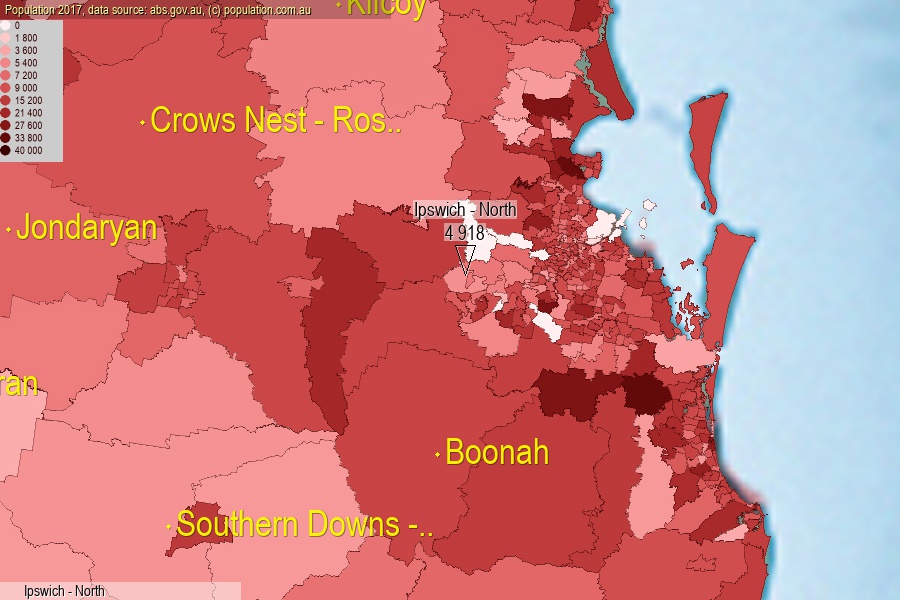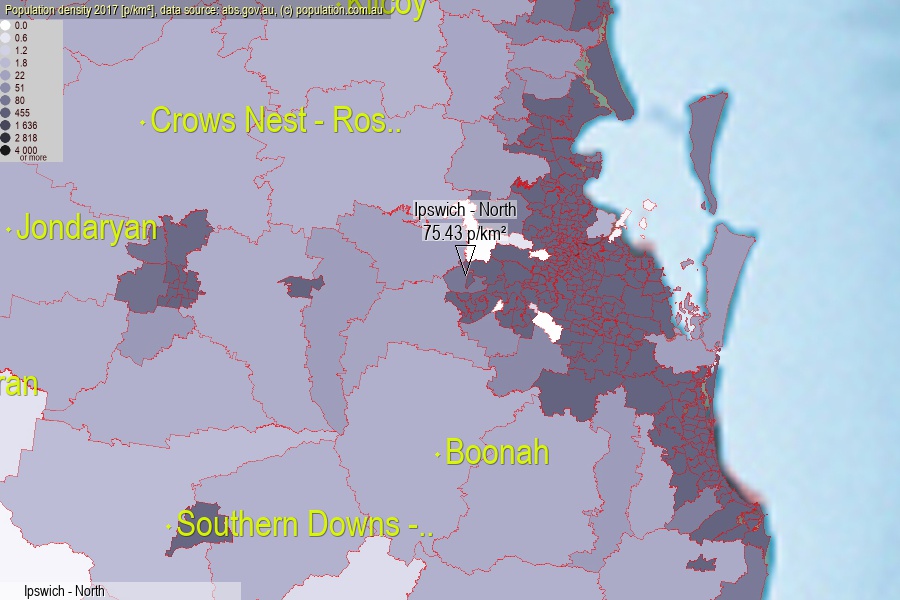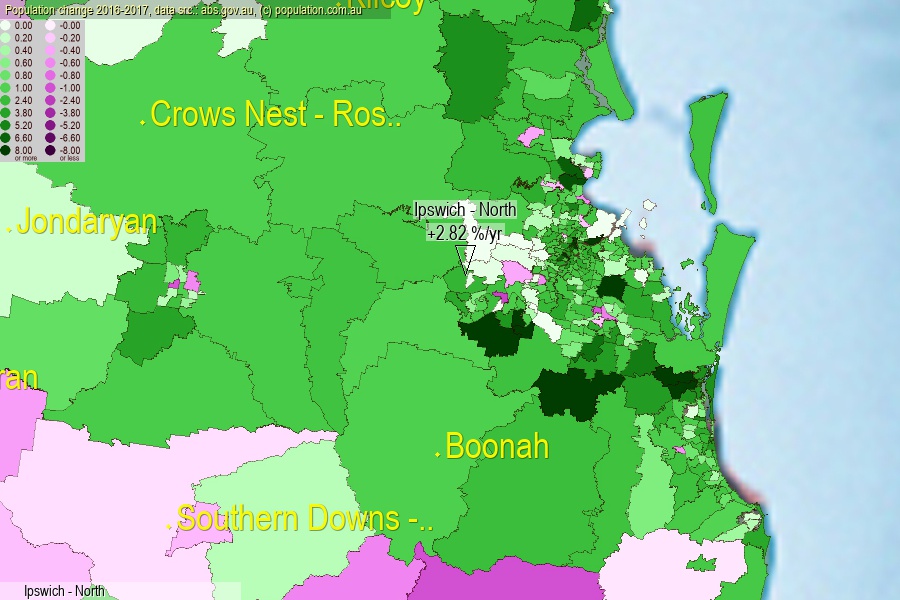 population.com.au
population.com.auLast official estimated population of Ipswich - North (as Statistical Area Level 2) was 4 918 people (on 2017-06-30)[2]. This was 0.02% of total Australian population and 0.099% of QLD population. Area of Ipswich - North is 65.20 km², in this year population density was 75.43 p/km² . If population growth rate would be same as in period 2016-2017 (+2.82%/yr), Ipswich - North population in 2025 would be 6 145. [0]



Click to enlarge. Ipswich - North is located in the center of the images.
Population [people], population density [p./km²] and population change [%/year] [2]
View borders » (new window) [4]
[1991-1992] +0.12 %/Yr.
[1992-1993] +0.16 %/Yr.
[1993-1994] -0.61 %/Yr.
[1994-1995] -0.20 %/Yr.
[1995-1996] +0.04 %/Yr.
[1996-1997] +14.16 %/Yr.
[1997-1998] +5.42 %/Yr.
[1998-1999] +1.89 %/Yr.
[1999-2000] +3.25 %/Yr.
[2000-2001] +5.72 %/Yr.
[2001-2002] +2.07 %/Yr.
[2002-2003] +2.83 %/Yr.
[2003-2004] +2.14 %/Yr.
[2004-2005] +1.70 %/Yr.
[2005-2006] +2.76 %/Yr.
[2006-2007] +1.44 %/Yr.
[2007-2008] +3.21 %/Yr.
[2008-2009] +5.10 %/Yr.
[2009-2010] +4.04 %/Yr.
[2010-2011] +4.79 %/Yr.
[2011-2012] +2.42 %/Yr.
[2012-2013] +2.50 %/Yr.
[2013-2014] +0.56 %/Yr.
[2014-2015] +0.69 %/Yr.
[2015-2016] +1.77 %/Yr.
[2016-2017] +2.82 %/Yr.
[0] Calculated with linear interpolation from officially estimated population
[1] Read more about SA2 and Australian Statistical Geography Standard (ASGS) on abs.gov.au
[2] Population data from Australian Bureau of Statistics (Population and density: 2017; change: 2016-2017)
[3] Digital Boundaries: Australian Statistical Geography Standard (ASGS) 2016.
[4] Border coordinates are simplifyed using Ramer-Douglas-Peucker algorithm.